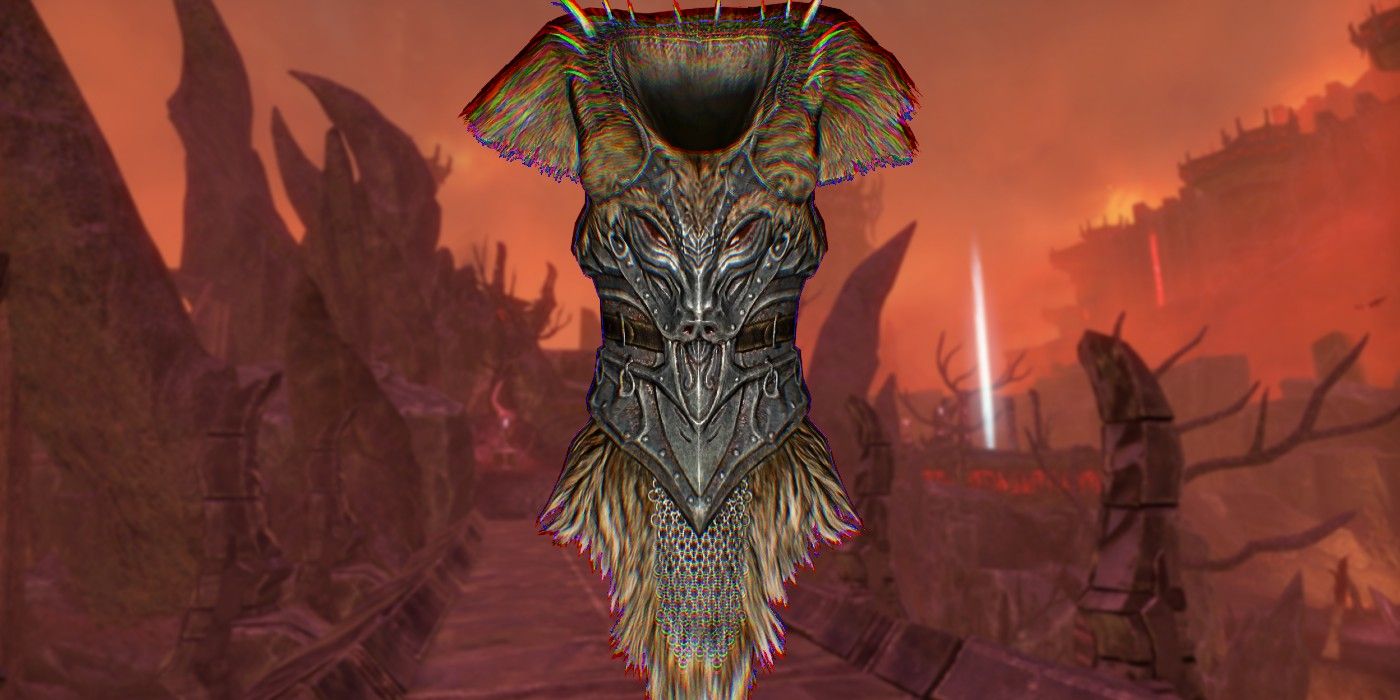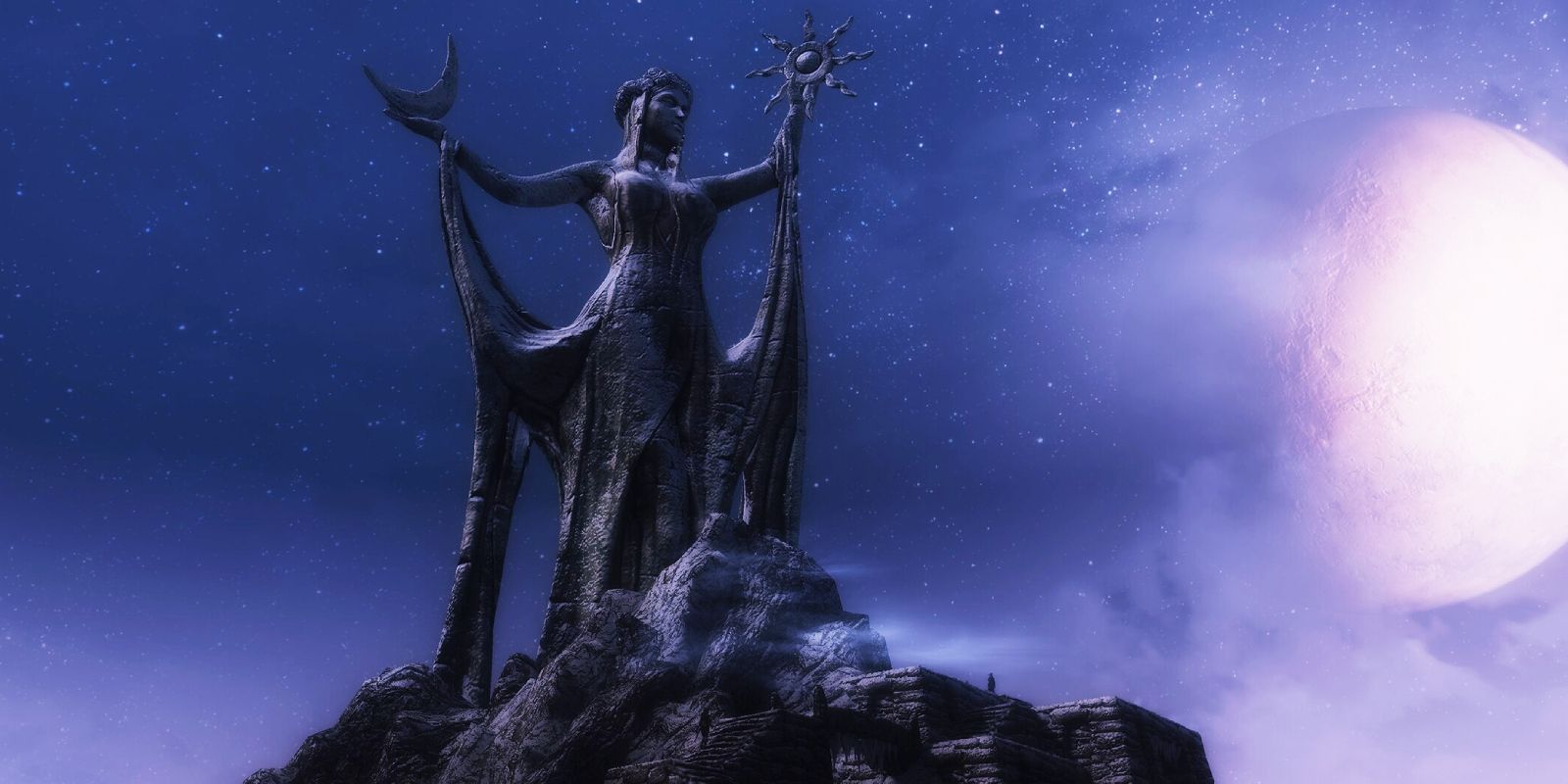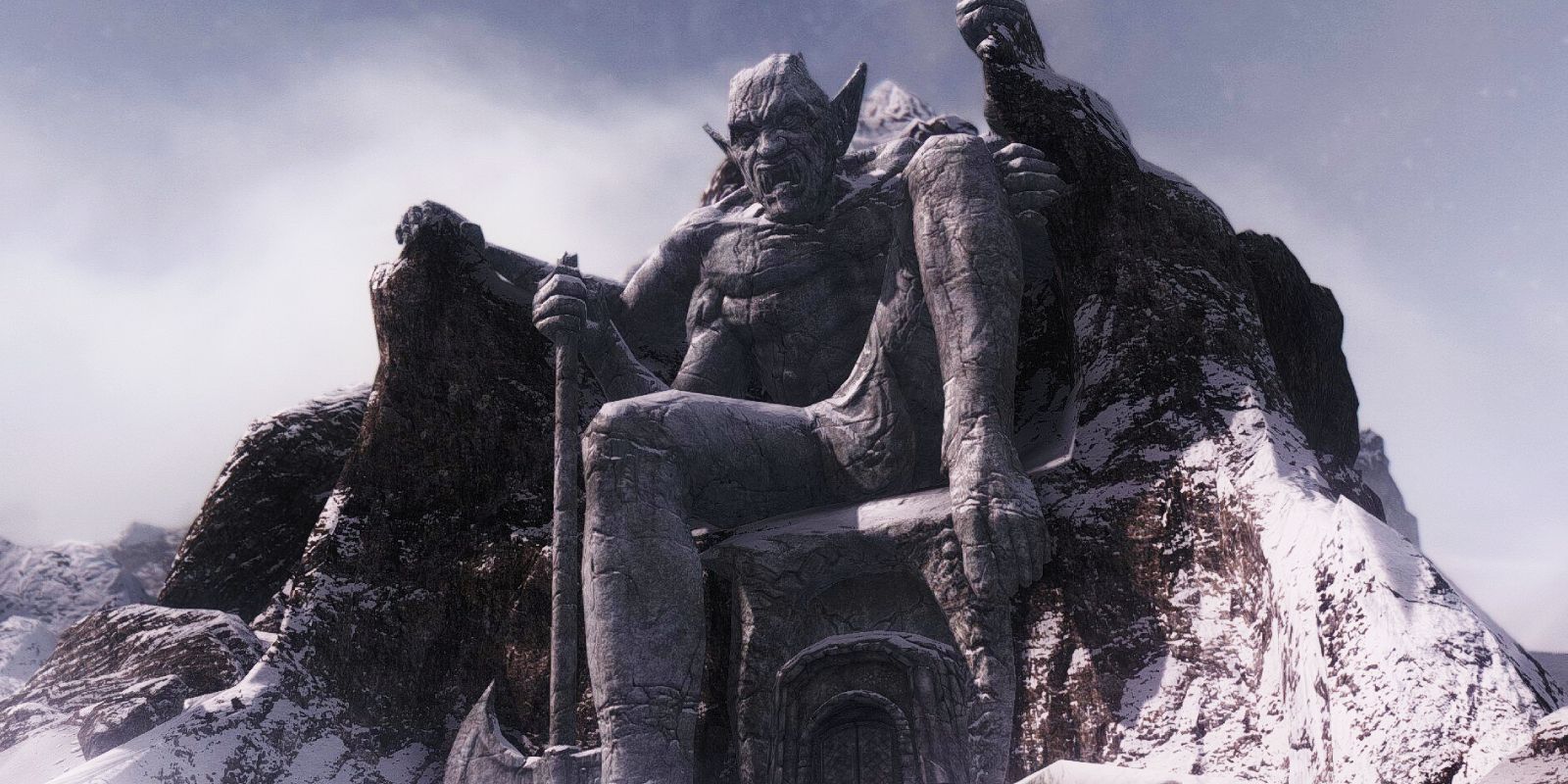
A powerful piece of armor in The Elder Scrolls V: Skyrim, the Savior’s Hide origins remain disputed, and its creation may involve Hircine, Mehrunes Dagon, a conniving altmer, and a werewolf unlucky enough to lose his pelt. Players can acquire the Savior’s Hide as a reward for completing the "Ill Met by Moonlight" quest, yet the powerful leather-armor cuirass is accessible in several prior games.
Throughout its appearances in games and mentions in lore books, the Savior’s Hide has developed three competing origin stories. Two of which involve the Daedric prince Hircine, the Lord of the Hunt, while the third involves Mehrunes Dagon and a powerful yet hubristic high-elf. In any case, the origins of the Savior’s Hide speak to its abilities and connection to the mythical Deadric Lords of Oblivion.
The first origin story for the Savior’s Hide comes from the in-game Skyrim book “Tamrielic Lore” by the character Yagrum Bagarn, which appeared in The Elder Scrolls III: Morrowind before reappearing in The Elder Scrolls IV: Oblivion and again, albeit under a different name and with minor altercations, in The Elder Scrolls Online. The book describes how Hircine gifted his peeled hide to the first mortal to escape from the hunting grounds - the Daedric Prince’s realm in Oblivion - who then fashioned the hide into a cuirass capable of resisting magical attacks. This version of the tale also hints that the Savior’s Hide may hold a certain level of sentience, as it claims the cuirass tends to fall into the hands of different adventurers as though it has a mind of its own.

This iteration of the origin story is interesting for several reasons, the first of which is that it draws a physical connection between the Savior’s Hide and Hircine by suggesting that the armor could be a piece of Hircine’s skin. Secondly, the tale reinforces existing notions surrounding Hircine’s personality. Daedric Princes are, broadly speaking, chaotic and destructive, lest we forget Molag Bal’s use of Dark Anchors in The Elder Scrolls Online or Mehrunes Dagon’s plot to invade all of Tamriel in The Elder Scrolls IV: Oblivion; however, Hircine’s actions are far less widely evil. While the Lord of the Hunt is by no means benevolent, he puts a high value on sportsmanship and honor. Because this version of the tale mentions that the Savior’s Hide was a gift to a mortal who escaped his hunting grounds, it reflects this nuanced aspect of Hircine’s character
The other origin story involving Hircine comes from the item description for the Savior’s Hide in The Elder Scrolls: Blades. Whereas “Tamerielic Lore” describes the cuirass to be Hircine’s peeled hide, the item description claims that Hircine instead sewed the armor using the hide of a werewolf. Although this version of the Savior’s Hide origin does not speak to Hircine’s sportsman-like personality, it instead highlights another key aspect of Hircine’s lore: his creation of lycanthropy.
Hircine serves as both the progenitor and steward of The Elder Scrolls' were-creatures, frequently referring to them as his children. While Hircine skinning a werewolf to create the Savior’s Hide may not seem to reflect this guardian-like role, the Daedric Prince has sought to punish those who consider their lycanthropy a curse rather than a blessing. For instance, Hircine implores the player in The Elder Scrolls II: Daggerfall to slay a wereboar who has become miserable due to their lycanthropy. Could the werewolf whose pelt created the Savior’s Hide have been struck down due to their disdain for Hircine’s gift? Or did Hircine use the hide of a werewolf he respected as a means to honor their memory? In any case, The Elder Scrolls: Blades version of the origin story ties the Savior’s Hide to Hircine and his role as the Father of Manbeasts.
The final origin story for the Savior’s Hide attributes its creation, not to Hircine, but the Daedric Prince Malacath. In “Tal Marog Ker’s Researches,” another in-game book first appearing in The Elder Scrolls III: Morrowind and reappearing with slight chances in The Elder Scrolls Online, the fictional author simply states that the Savior’s Hide was created by Malacath and does not detail how or why the God of Curses made the armor. However, the book does include a story in which the Savior’s Hide was used in an attempt to trick another Daedric Prince, Mehrunes Dagon.

As “Tal Marog Ker’s Researches” details, Chimere Graegyn, a summoner from an aristocratic high-elf family, used the Savior’s Hide in an attempt to trick Mehrunes Dagon into granting him immortality. This version of the story claims that the Savior’s Hide protects its wearer from the attacks of an oathbreaker, though it makes them incredibly vulnerable to magic. Knowing this, Chimere summoned Dagon and had him make an oath the Daedric Prince did not intend to keep: a pact which would allow Chimere to live forever in his hometown, Caecilly Island, amongst the voices of his friends and compatriots.
Upon making this pact, Dagon uncovered Chimere’s trickery, yet the Savior’s Hide was able to protect Chimere long enough to cast a spell banishing the Daedric Prince back to Oblivion. However, Dagon had time to twist the literal words of Chimere’s pact into a cruel punishment. Chimere and the entirety of Caecilly Island were thrown into Oblivion along with Mehrunes Dagon. Chimere lived, but the rest of Caecilly Island’s inhabitants were killed, their voices remaining to torment Chimere as he contemplates his hubris for all of eternity.
Although this origin story for the Savior’s Hide includes no mention of Hircine, it does not lack in its connection to the Daedra. Its exploration of hamartia and a challenge to the power of Daedric Princes seems grand and even akin to the real-world mythology of Ancient Greece and its tragic heroes who seek to defy fate. Additionally, this story mentions that the Savior’s Hide makes its wearer weak, not resistant, to magical attacks — a notable contrast from both previous origins and the in-game abilities of the armor. While this contradiction may seem to be just an inaccuracy on the part of the real-world writer of the in-game book, it and the other previously mentioned contractions illustrate a larger point surrounding The Elder Scrolls lore.
The Elder Scrolls series contains expansive lore on its history, legends, and cosmology, yet there have always been tinges of inaccuracies, contradictions, and un-finite answers. While this can be frustrating for players seeking to find the one true origin of an item like the Savior’s Hide, it also adds to the depth of The Elder Scrolls' worldbuilding. Granted, some of these inconsistencies may very well be oversights on the part of writers and developers, but they also hint that the world of The Elder Scrolls contains misconceptions and arguments about history and mythology. Are the fictional authors of The Elder Scrolls' in-game books misinformed? Do scholars in Tamerial’s keeps quarrel over the true histories of their world? Maybe not, but players hoping to find concrete, definitive answers to the lingering questions of The Elder Scrolls V: Skyrim should revel in the contradictions rather than grow frustrated at a lack of clarity.
from ScreenRant - Feed https://ift.tt/3H2KHQT


0 Comments